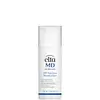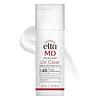What's inside
What's inside
 Key Ingredients
Key Ingredients

 Benefits
Benefits

 Concerns
Concerns

 Ingredients Side-by-side
Ingredients Side-by-side

Water
Skin ConditioningEthylhexyl Isononanoate
EmollientNiacinamide
SmoothingGlyceryl Stearate
EmollientPEG-100 Stearate
Glycerin
HumectantHydroxyethyl Acrylate/Sodium Acryloyldimethyl Taurate Copolymer
Emulsion StabilisingC10-30 Cholesterol/Lanosterol Esters
EmulsifyingGlycereth-26
HumectantPhenoxyethanol
PreservativeLinoleic Acid
CleansingHydroxypropyl Bispalmitamide Mea
EmollientPotassium Cetyl Phosphate
EmulsifyingXanthan Gum
EmulsifyingTocopheryl Acetate
AntioxidantHydrolyzed Caesalpinia Spinosa Gum
AbsorbentOleth-3 Phosphate
Oleic Acid
EmollientEthylhexylglycerin
Skin ConditioningCaesalpinia Spinosa Gum
Skin ConditioningPolysorbate 60
EmulsifyingSorbitan Isostearate
EmulsifyingHydrolyzed Rice Protein
Skin ConditioningDisodium EDTA
Thioctic Acid
AntioxidantSodium Hyaluronate
HumectantPalmitic Acid
EmollientStearic Acid
CleansingSodium Bisulfite
AntioxidantPotassium Sorbate
PreservativeSodium Benzoate
MaskingPhosphoric Acid
BufferingTetrasodium EDTA
Water, Ethylhexyl Isononanoate, Niacinamide, Glyceryl Stearate, PEG-100 Stearate, Glycerin, Hydroxyethyl Acrylate/Sodium Acryloyldimethyl Taurate Copolymer, C10-30 Cholesterol/Lanosterol Esters, Glycereth-26, Phenoxyethanol, Linoleic Acid, Hydroxypropyl Bispalmitamide Mea, Potassium Cetyl Phosphate, Xanthan Gum, Tocopheryl Acetate, Hydrolyzed Caesalpinia Spinosa Gum, Oleth-3 Phosphate, Oleic Acid, Ethylhexylglycerin, Caesalpinia Spinosa Gum, Polysorbate 60, Sorbitan Isostearate, Hydrolyzed Rice Protein, Disodium EDTA, Thioctic Acid, Sodium Hyaluronate, Palmitic Acid, Stearic Acid, Sodium Bisulfite, Potassium Sorbate, Sodium Benzoate, Phosphoric Acid, Tetrasodium EDTA
Zinc Oxide 9%
Cosmetic ColorantEthylhexyl Methoxycinnamate 7.5%
UV AbsorberWater
Skin ConditioningCyclopentasiloxane
EmollientNiacinamide
SmoothingOctyldodecyl Neopentanoate
EmollientHydroxyethyl Acrylate/Sodium Acryloyldimethyl Taurate Copolymer
Emulsion StabilisingButylene Glycol
HumectantPhenoxyethanol
PreservativePolyisobutene
Triethoxycaprylylsilane
Tocopheryl Acetate
AntioxidantPEG-7 Trimethylolpropane Coconut Ether
EmulsifyingOleth-3 Phosphate
Iodopropynyl Butylcarbamate
PreservativeLactic Acid
BufferingSodium Hyaluronate
HumectantPhosphoric Acid
BufferingZinc Oxide 9%, Ethylhexyl Methoxycinnamate 7.5%, Water, Cyclopentasiloxane, Niacinamide, Octyldodecyl Neopentanoate, Hydroxyethyl Acrylate/Sodium Acryloyldimethyl Taurate Copolymer, Butylene Glycol, Phenoxyethanol, Polyisobutene, Triethoxycaprylylsilane, Tocopheryl Acetate, PEG-7 Trimethylolpropane Coconut Ether, Oleth-3 Phosphate, Iodopropynyl Butylcarbamate, Lactic Acid, Sodium Hyaluronate, Phosphoric Acid
 Reviews
Reviews

Ingredients Explained
These ingredients are found in both products.
Ingredients higher up in an ingredient list are typically present in a larger amount.
This is a synthetic polymer. It helps improve the texture of products by adding thickness and gel-like feel.
It is also an emulsifer, meaning it prevents ingredients such as oil and water from separating. It also helps evenly disperse other ingredients.
Niacinamide is a multitasking form of vitamin B3 that strengthens the skin barrier, reduces pores and dark spots, regulates oil, and improves signs of aging.
And the best part? It's gentle and well-tolerated by most skin types, including sensitive and reactive skin.
You might have heard of "niacin flush", or the reddening of skin that causes itchiness. Niacinamide has not been found to cause this.
In very rare cases, some individuals may not be able to tolerate niacinamide at all or experience an allergic reaction to it.
If you are experiencing flaking, irritation, and dryness with this ingredient, be sure to double check all your products as this ingredient can be found in all categories of skincare.
When incorporating niacinamide into your routine, look out for concentration amounts. Typically, 5% niacinamide provides benefits such as fading dark spots. However, if you have sensitive skin, it is better to begin with a smaller concentration.
When you apply niacinamide to your skin, your body converts it into nicotinamide adenine dinucleotide (NAD). NAD is an essential coenzyme that is already found in your cells as "fuel" and powers countless biological processes.
In your skin, NAD helps repair cell damage, produce new healthy cells, support collagen production, strengthen the skin barrier, and fight environmental stressors (like UV and pollution).
Our natural NAD levels start to decline with age, leading to slower skin repair, visible aging, and a weaker skin barrier. By providing your skin niacinamide, you're recharging your skin's NAD levels. This leads to stronger, healthier, and younger looking skin.
Another name for vitamin B3 is nicotinamide. This vitamin is water-soluble and our bodies don't store it. We obtain Vitamin B3 from either food or skincare. Meat, fish, wheat, yeast, and leafy greens contain vitamin B3.
The type of niacinamide used in skincare is synthetically created.
Learn more about NiacinamideOleth-3 Phosphate is created from phosphoric acid and Oleth-3.
It is used as an emulsifier to prevent ingredients from separating.
Phenoxyethanol is a preservative that has germicide, antimicrobial, and aromatic properties. Studies show that phenoxyethanol can prevent microbial growth. By itself, it has a scent that is similar to that of a rose.
It's often used in formulations along with Caprylyl Glycol to preserve the shelf life of products.
Phosphoric acid is used to adjust the pH of products.
Sodium Hyaluronate is hyaluronic acid's salt form. It is commonly derived from the sodium salt of hyaluronic acid.
Like hyaluronic acid, it is great at holding water and acts as a humectant. This makes it a great skin hydrating ingredient.
Sodium Hyaluronate is naturally occurring in our bodies and is mostly found in eye fluid and joints.
These are some other common types of Hyaluronic Acid:
Learn more about Sodium HyaluronateTocopheryl Acetate is AKA Vitamin E. It is an antioxidant and protects your skin from free radicals. Free radicals damage the skin by breaking down collagen.
One study found using Tocopheryl Acetate with Vitamin C decreased the number of sunburned cells.
Tocopheryl Acetate is commonly found in both skincare and dietary supplements.
Learn more about Tocopheryl AcetateWater. It's the most common cosmetic ingredient of all. You'll usually see it at the top of ingredient lists, meaning that it makes up the largest part of the product.
So why is it so popular? Water most often acts as a solvent - this means that it helps dissolve other ingredients into the formulation.
You'll also recognize water as that liquid we all need to stay alive. If you see this, drink a glass of water. Stay hydrated!
Learn more about Water